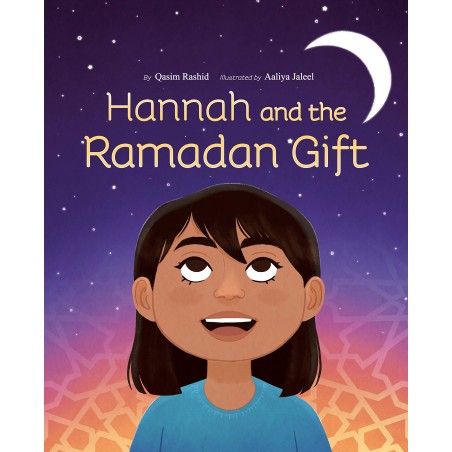



It's the first day of Ramadan and Hannah wants to be a part of this important month every way she can. But if she's too young to fast, how can she observe Ramadan? By saving the world, Dada Jaan tells her. And so Hannah learns that by helping her friends and neighbors and by showing kindness and generosity, she can make the world a better place. The debut picture book by human rights activist and attorney Qasim Rashid tells a timely story full of warmth and heart about the observance of Ramadan and the power of good deeds.
Linked Categories
Our Review
![]()
Right at the beginning we learn that Hannah wont be fasting this year, and asks her grandfather “but if I can’t fast, then how can I celebrate Ramadan?”
“By saving the world” replied Dada Jaan.
And that’s what the story is about – Hannah’s journey through Ramadan being kind and helping others.
Even though there’s no details about Ramadan, fasting, and why we fast it has some very unique aspects.
The main characters in the story are Hannah and her Dada Jaan (grandfather) and their loving relationship. From the first page where he wakes her up for sehri to the end where they’re racing for the last gulab jamun – it’s simply adorable!
What I found distinctive was that on Eid, after the prayer Hannah and her family visited the cemetery to remember Dadi Jaan (grandmother) and other loved ones. This is a common practice in many countries, and I have not seen it addressed/represented in a children’s book before.
Furthermore two lessons that really stuck out were:
1- Hannah points out that the world has so many people how can they help everyone, and her grandfather’s reply was that “we can help our neighbours and that’s worth the world”. It reminded me of “saving one person is like saving all of humanity”. Focusing on making your neighborhood a better place with good deeds is something we can do with our children. We can make a list of little things we can do and Inshallah do one of them a week.
2- I liked the concept that you have to put in an effort to be kind, and you may not even be appreciated/praised. For kids it can actually be hard work to be kind. Parents often tell their children to “be kind” as if it just comes naturally, but it’s something that needs to be practiced and Inshallah it’ll become ‘easy’ over time. Also young children are generally all about “me me me” and need to be guided on HOW they can be kinder. That’s why I found Hannah so relatable and liked how her grandfather gently told her how she could save the world.